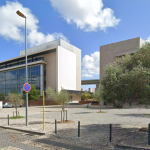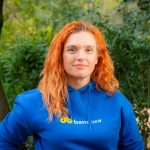Portugal’s historical sites are under explored as a business proposition
Portugal is estimated to have around 35,000 sites of historical and cultural significance, most of them being left to idly fall into rack and ruin through lack of interest, investment, or infrastructure to serve them — often all three.
And of the relatively small percentage of listed buildings in Portugal, these could, if they were restored, marketed and exploited in the right way, see visitor numbers double and revenues treble.
This is according to a study into the economic and social value of Portugal’s national heritage sector published in 2020 called ‘Cultural Heritage Study in Portugal: An Evaluation of its Economic and Social Value’.
The study was timely after the boom year in tourism in Portugal which saw an estimated 29 million tourists arrive at Portugal’s airports in 2019, bringing in a record €18Bn (+9.8%) on 2018 according to the Bank of Portugal – a record beaten this year.
A rich and varied heritage
Yet with all these visitors, growing each and every year (€20Bn in 2022), not to mention the increasing number of relocations to Portugal from Brazilians, Chinese, Americans and French citizens, the sad truth is neither the Portuguese, nor successive governments have known how to value the rich and varied historical heritage Portugal has.
“Perhaps its because of limited public funds, but the truth is that the Portuguese just don’t value their own national heritage and visit their historical monuments and museological offer in the same way as the British do”, bemoaned Catarina Valença Gonçalves, founder and director of SPIRA a private consultancy operating in the cultural heritage sector.
Back from a trip in the UK, the co-author of the study — it also involved José Maria Lobo de Carvalho, the director of Portugal’s Heritage Observatory and José Tavares, a Nova SBE professor, and was funded by bank Millennium bcp, which has also funded extensive restoration works of rooms at Lisbon’s National Palace of Ajuda – said she marvelled at the way cities like Bristol had successfully capitalised on its historical maritime heritage from different eras and lamented that Portugal didn’t have an equivalent of the UK’s National Trust.
“I think it is important to bear in mind that we are still a relatively recent democracy. We were, and still are in some respects, a very poor country, and so the main concern is not heritage”, she says.
“I think that with and after Expo 1998 things changed. That was a landmark for heritage in Lisbon and Portugal, and the next 10 years will be a new phase. I think we all agree, as does the government, that we don’t have the means to manage the great number of monuments that we have in Portugal, let alone the 4,500 listed monuments,” she continues.
A driver for the economy?
Of Portugal’s listed monuments and buildings, Catarina Valença Gonçalves says that only 250 are open to the public and this survey was the first to actually list the numbers. “Prior to that we had a general idea that we could do much more, but after the survey we now know what it will mean in terms of social and economic development”.
The study, which was presented online during the pandemic, was based on a total of 4,575 classified monuments and properties spread over 308 districts in Portugal. According to the study carried out between 2018 and 2019, it is estimated that this heritage could create full time employment for 25,000 visitors annually for each heritage site, increase direct jobs in the hotel sector and overnight stays in a given municipality by 3.4%.
“It really was a pioneering document in Portugal when before we simply didn’t have statistics on cultural heritage let alone a policy of collecting data nationally”.
Catarina Valença Gonçalves points out that the other problem is getting reliable information at a local level because in the majority of cases information is gathered by different bodies such as the General-Directorate of Cultural Patrimony, the regional directorates of Culture, or the municipal management company that deals with cultural entertainment and facilities, as is the case with Lisbon.
“There just isn’t one body that collates all of the information from around the country for all types of listed heritage”, she says pointing to English Heritage as a model example of an institution that looks after the National Heritage Collection of more than 400 state-owned historic sites and monuments across England.
Catarina also emphasises that the problem of heritage is different from museums. “With heritage it’s already here, not set up and created in a designated place to house treasures and artefacts”.
“You can pass through it so many times and not even notice it. It becomes invisible. When you open a museum, there’s the inauguration ceremony, the thinking behind it, but with monuments it is not the same as they are already there”, she explains.
“Our aim is to ask the question: What if the other 4,325 monuments, other than the 240 that are open, were to be opened to the public. How many visitors could we expect, and what would be the revenues at the ticket office?” she asks.
An excellent and more recent example in Portugal of how a forgotten and obsolete site with a deep cultural, economic and historical significance can be regenerated, restored and repurposed to give a new lease of life, is the World of Wine project (WOW) in Porto.
The project, from the Fladgate Partnership created around an extensive cluster of old port wine warehouses in Vila Nova de Gaia by the banks of River Douro, created probably the most important tourist attraction to emerge from the city in years with different cultural and museological centres which are dynamic, entertaining and technology-led in telling the story of several phases of the city’s and Portugal’s trading history from the story of Port Wine and Portugal’s contribution to the chocolate industry, to cork and the history of the city from Roman times, in a way that is compelling, supremely engaging and fun.
But with Portugal’s second city, which attracted 10 million overnight stays this year, is a base for low-cost airline carriers like easyJet and Ryanair, and which has a very dynamic regional tourism board – Turismo do Porto e Norte de Portugal – it is easy to see why millions were invested.
Yet there are other, more hidden attractions in parts of the country with equally fascinating stories to tell, but because they are off the beaten tourist track, hardly get a look-in.
How many tourists, we wonder, realise the important part that Portugal had in the world in terms of the production and dissemination of top-quality coffees? Yet many have yet to learn of the Delta Coffee Museum, probably one of the most unique and interesting museums in the Alentejo region of Portugal, at Campo Maior.
Cultural heritage – a democratic asset
“Cultural heritage is very democratic if you think about it, because it belongs to everybody and means that whatever your socio-economic and educational background, you can enjoy it and learn from it, which is why we think it should be considered a strategic resource”, says Catarina.
And it is partly why the art historian, who is somewhat of an expert in French and Portuguese medieval art history, created her own company SPIRA which focuses on history of art, museology, communication, design, and the management and conservation restoration of heritage sites and their application for tourism.
SPIRA is in a small place called Vila Nova da Baronia (Alvito) which is in the “very heart of Portugal”.
Located in the Lower Alentejo district of Beja, it is not far from the medieval fortress towns of Alcácer do Sal, Beja itself and Évora, and despite being served by five trains daily from Lisbon in both directions, it often goes completely unnoticed by Portuguese visitors, let alone overseas tourists
SPIRA is dedicated to bringing people closer to Cultural Heritage and transforming the way they look at Portugal’s common heritage: “We seek to bring everyone, without exception, into a spontaneous relationship with this collective asset”, says Catarina.
Combining knowledge, creativity and action, SPIRA researches, designs, organises and promotes projects focused on these collective heritage assets.
And it as won awards for its consultancy work. Recently it got 1st Prize from the European Cultural Tourism Network for the project ‘We are what we eat’ for Parques de Sintra – Monte da Lua which has successfully marketed Sintra and its many attractions both nationally and internationally as a experience and place to discover, rather than simply a quaint town of villas dominated by a fairytale pseudo castle.
Catarina Valença Gonçalves says the conclusions off the study are clear. “They reveal a very significant potential to not only generate revenues, but also be an important cultural and social resource for municipal councils to attract thousands of visitors annually to listed heritage sites, which in many cases are currently being overlooked and not fully taken advantage of because of a long tradition and ideological prejudice which does not see the investment costs as an ultimate tool of development and long-term benefit”, she says.
The findings of the study were presented at the APAVT congress (Portuguese Association of Travel and Tourism Agencies) which took place in Ponta Delgada, the capital of the island of São Miguel in the Azores between 8-11 December and whose delegates “have a lot of political and economic clout”.
Catarina Valença Gonçalves leaves us with an important message which she will deliver at that congress: “Who is going to close their eyes and ignore the numbers that we now know? Who is going to dare say we will not take notice of this opportunity for development that we have with these heritage sites that belong to everybody?”










